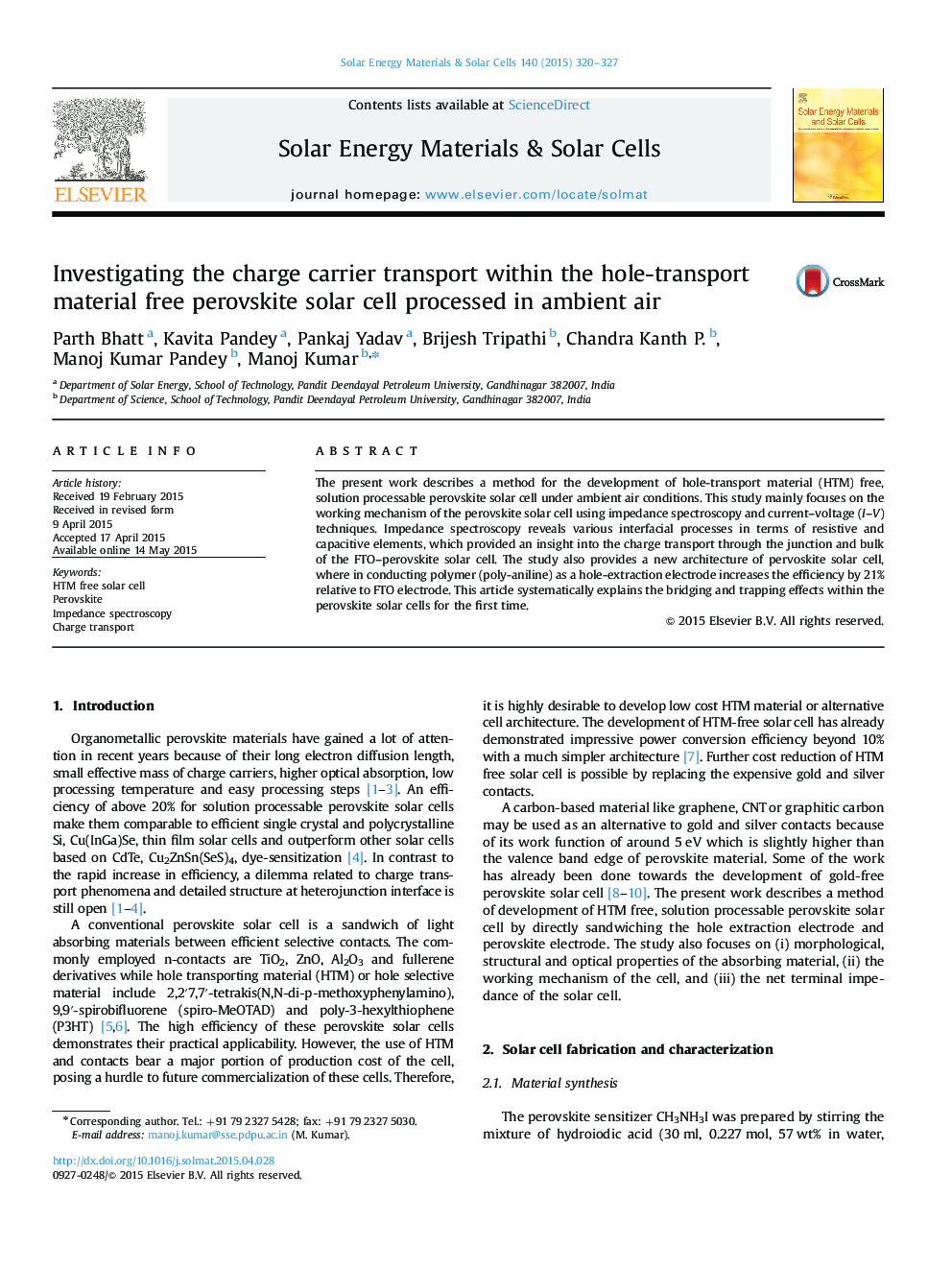| Article ID | Journal | Published Year | Pages | File Type |
|---|---|---|---|---|
| 6535211 | Solar Energy Materials and Solar Cells | 2015 | 8 Pages |
Abstract
The present work describes a method for the development of hole-transport material (HTM) free, solution processable perovskite solar cell under ambient air conditions. This study mainly focuses on the working mechanism of the perovskite solar cell using impedance spectroscopy and current-voltage (I-V) techniques. Impedance spectroscopy reveals various interfacial processes in terms of resistive and capacitive elements, which provided an insight into the charge transport through the junction and bulk of the FTO-perovskite solar cell. The study also provides a new architecture of pervoskite solar cell, where in conducting polymer (poly-aniline) as a hole-extraction electrode increases the efficiency by 21% relative to FTO electrode. This article systematically explains the bridging and trapping effects within the perovskite solar cells for the first time.
Related Topics
Physical Sciences and Engineering
Chemical Engineering
Catalysis
Authors
Parth Bhatt, Kavita Pandey, Pankaj Yadav, Brijesh Tripathi, Chandra Kanth P., Manoj Kumar Pandey, Manoj Kumar,
